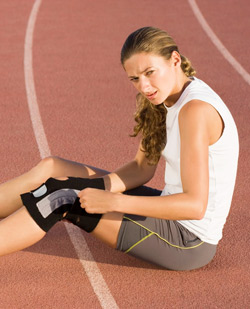
“The female athlete triad is a spectrum of symptoms that include low energy availability, menstrual cycle abnormalities, and low bone mineral density. Low energy availability can mean taking in inadequate calories or expending more energy than the body is designed to do. It can result from poor nutrition or eating habits or any type of eating disorder. Any combination of these conditions can lead to premature bone loss in females,” explains lead study author and orthopaedic surgeon Elizabeth Matzkin, MD.
Both athletes and nonathletes participating in any sports and exercise can develop symptoms of the female athlete triad. But the likelihood of female athletes sustaining a bone stress injury significantly increases as the number of symptoms they have increases. The increase is substantial–
15 percent to 21 percent with one symptom;
21 percent to 30 percent with two symptoms; and,
29 percent to 50 percent with all three symptoms.
The study authors also found that female athletes diagnosed with poor nutrition or low energy availability are two to four times more likely to sustain a sports-related injury. Female athletes who self-reported menstrual cycle abnormalities had a nearly three times greater risk of a bone and joint injury.
“Proper nutrition and energy balance are key to staying healthy in athletes of all ages. But maximizing bone health when you are young is paramount to your bone health later in life,” says Dr. Matzkin. “It is important for young females to maximize their bone density until about the age of 25–anything lost before then cannot be regained. After age 25 we can only hope to maintain what we have.”
As participation in sports by women and girls continues to increase and become more competitive, it is important to prevent, diagnose, and manage the components of the female athlete triad. Although the female athlete triad poses a great health risk, the benefits of participation in sports significantly outweigh the risks.
“Any athlete who falls under the ‘umbrella’ of the triad should be questioned by their physicians and educated regarding all of the components and potential health risks of this condition. By preventing premature bone loss in young female athletes, we can potentially prevent future fragility fractures,” says Dr. Matzkin. The study done by American Academy of Orthopaedic Surgeons.